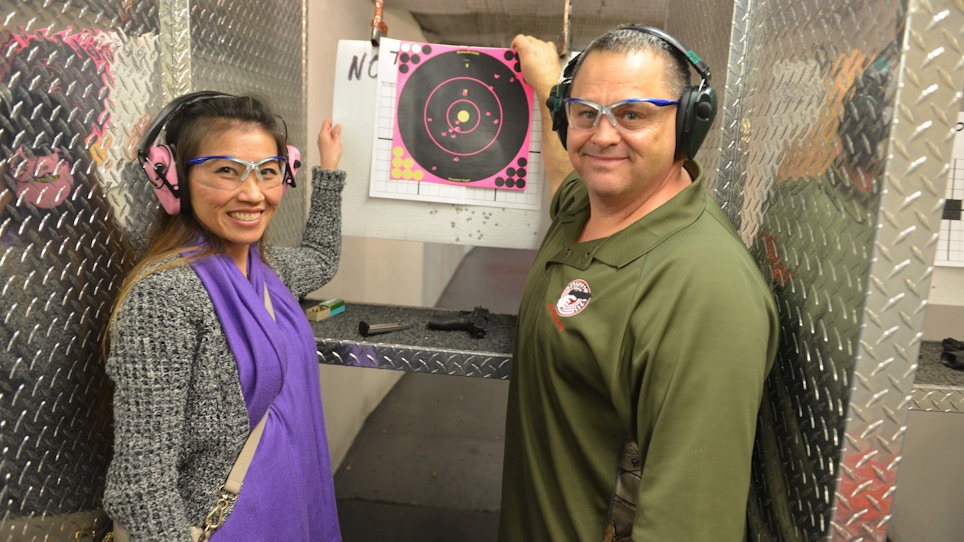You can look at the health of your business as an FFL retailer from several perspectives. Naturally, you’d cover the basics: turn rates, margins, overall profits, etc. But while you may be able to tick off all those items on the basics list and think, “I’m in the black. Things are just great,” relying only on those numbers can leave you with an evaluation that’s really one viewed in a vacuum.
What’s Everyone Else Doing?
In order to form a solid opinion of your business operation’s health, a comparison of what you’re doing compared to others in our industry can be invaluable. Let’s say, for instance, that you’re operating in the black. Inventory is moving, customers are happy, the staff is busy and the cash register doesn’t have a day that leaves it cold. But are other retailers like you more profitable? Are their turn rates and margins higher? Is their cash flow better than yours? Are they on to a new trend that’s proving to be a boom? Knowing the answers to these questions and others like them can reveal areas of your business that can be improved, making your good numbers better.
Conversely, what if you’re operating in the red or struggling to maintain the good numbers you’ve experienced in the past? It’s easy to get lost in a downturn, and it’s easy to think you’re the only one with a problem. You can get mired in it, even perpetuate its continuation: “Business used to be so good, but now my customer traffic is slow, and I don’t know what to do.” And, so, you randomly change things without any real analysis of what you’re changing or why, and that means you’re merely hoping things will change. But what if you could see that other FFLs may be struggling in the same areas you are while also being able to see where they’re succeeding? That kind of discovery could instantly lead to a solution of your own and the turnaround you need.
Having that information is as easy as visiting www.NSSF.org and locating the newly released “2017 Firearms Retailer Survey Report” (as well as other reports such as the “Financial Benchmarking Report for Firearms Retailers”). For the most recent data, NSSF partnered with research experts Southwick Associates to survey more than 300 firearms retailers across the country to see what they’re selling, how they’re selling it and to whom they’re selling. Complemented by trend data compiled between 2008 and 2016, just a few points of intelligence the report reveals:
- Handgun sales are 44 percent of sales dollars.
- Roughly 70 percent of reporting retailers believe they had more female customers in their stores in 2016 over 2015, and they feel that 23 percent of sales revenue was attributed to females in 2016, up from 17 percent in 2009.
- Retailers reported that first-time gun buyers accounted for 24 percent of their customer base in 2016.
- Retailers with a website in 2016 came in at 75 percent, up from 49 percent in 2008.
- Top social media platforms retailers use to communicate with customers are Facebook, Google+, Twitter and Instagram.
How Can You Use This Information?
These stats, taken as a whole, can readily provide an avenue to improvement. Let’s assume your numbers for first-time firearms buyers and new female shooters — regardless of whether your overall numbers are good or bad — aren’t in line with those on the list above. What can you do to get those numbers in your store?
One option is to look at creating programs, sales and instructional courses that new shooters, especially new female shooters, would be interested in. Once that groundwork is completed, you could next work with a consultant to enhance your company website so that it is a top discoverable in a Google search by those looking for firearms training and retail services in an area. At the same time, you’ll make sure that all information regarding current sales and class offerings are readily found on that website, perhaps including a calendar of store events that users can use to plan their visit to the store or schedule instruction. Finally, you could focus on improving your social media presence to spread the word to new and female shooters that your store is the one that has all the firearms goods and services they’re looking for.
In other words, make it as easy as possible for new and female customers to choose your store over your competition.
This is just one plan of attack you can take and, of course, it’s one that’s simplified here for the sake of brevity. The actual planning and execution of any or all of these components will be complex and detailed if you are to succeed. The idea is to give you an eye to using the truckload of information in the “2017 Firearms Retailer Survey Report” and other NSSF research. Find an area where you aren’t stacking up, then develop a way to address it. In doing so, you’ll lose the vacuum view of how your store is doing and set a course for becoming the well-run store customers know they can turn to, want to turn to, in order to meet their needs — and that is a sure-fire recipe for profitability.
Note: NSSF’s “2017 Firearms Retailer Survey Report” is free to Voting Members, $120 to all other NSSF Members and $1,200 to non-members. For more information and to order your report, go to NSSF.org, click on the drop-down menu in the upper right-hand corner and locate the “Research” heading. Non-members can order directly from the report page, while NSSF Members can secure their special pricing by adding the report to their shopping cart after logging in to the Members portal.






